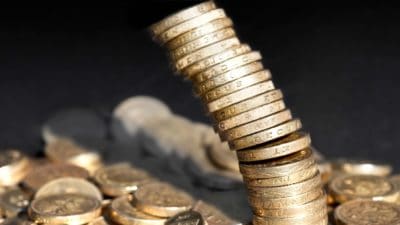According to conventional investment theory, long-term investors should run a well-diversified 60/40 portfolio. This portfolio is made up of three-fifths (60%) in equities (stocks and shares), with the remaining two-fifths (40%) invested in high-quality bonds. Bonds are IOUs issued by governments or companies that pay fixed interest rates in the form of regular ‘coupons’.
The theory behind the 60/40 portfolio is that it combines the best of both worlds. Most of my money is invested in (riskier) shares for greater long-term growth potential. The remainder is invested in safer bonds for portfolio income, as well as acting as ballast again stock-market declines. Often, when share prices fall, bond prices rise, thus helping to reduce portfolio volatility. But I think the 60/40 split is done with. Here’s why.
Bonds have enjoyed a 40-year bull market
In late 1981, the 10-year US Treasury bond yield peaked at 15.84% a year. That’s right: these ultra-safe securities — backed by the full faith and credit of the US government – paid yearly interest of nearly 16%. This happened after Paul Volcker, former Federal Reserve (the US central bank) chairman had steeply jacked up interest rates to tackle runaway US inflation. However, over the subsequent four decades, interest rates were slashed to today’s near-zero levels. This caused bond prices to soar, pushing down their portfolio yields.
Today, a 10-year T-bond offers a yearly yield of 1.52%. That’s under a tenth (a mere 9.6%) of the income paid 40 years ago from the self-same security. The reason why bond yields are so low and bond prices so high is because most major governments operate near-zero or ZIRP (zero interest-rate policy) programmes. Yet financial advisers still recommend clients stick with the 60/40 portfolio split.
Personally, my big problem with heavy exposure to bonds is that they no longer behave as they once did. Back then, bonds offered a low-risk, low-volatility alternative to stocks and shares. Today, they now come with much higher risk (especially if/when interest rates rise to quench inflation). Also, with bond coupons decimated, their income contribution to portfolio returns has greatly diminished. Thus, bonds dampen portfolio volatility far, far less than they did historically.
My portfolio has 0% bonds
As for my family, we no longer rely on bonds to provide income and stability to my portfolio. For several years, we’ve had zero exposure to bonds of any kind. Instead, our liquid wealth (excluding domestic property) has been near-100% invested in shares. My thinking is: why bother holding low-yielding bonds, only to watch them act as a drag on investment performance? Instead, I prefer to buy stable and rising passive income from high-yielding dividend stocks.
What’s more, I might be 10 years away from retirement, so I’ll continue investing throughout the coming market cycle. And if stock markets do tank, I’ll buy even more cheap shares at lower prices to boost my future returns. However, I do see US stocks — particularly mega-tech firms — as fully priced, frothy and possibly bubbly. Hence, I keep putting my money into cheap UK shares paying generous (but not guaranteed) cash dividends. In short, I’d rather own a share of a well-run business paying a 6%+ yearly dividend than a boring bond paying only 1.5% a year. For me, there may actually be less portfolio risk and volatility by following this high-yield approach!







